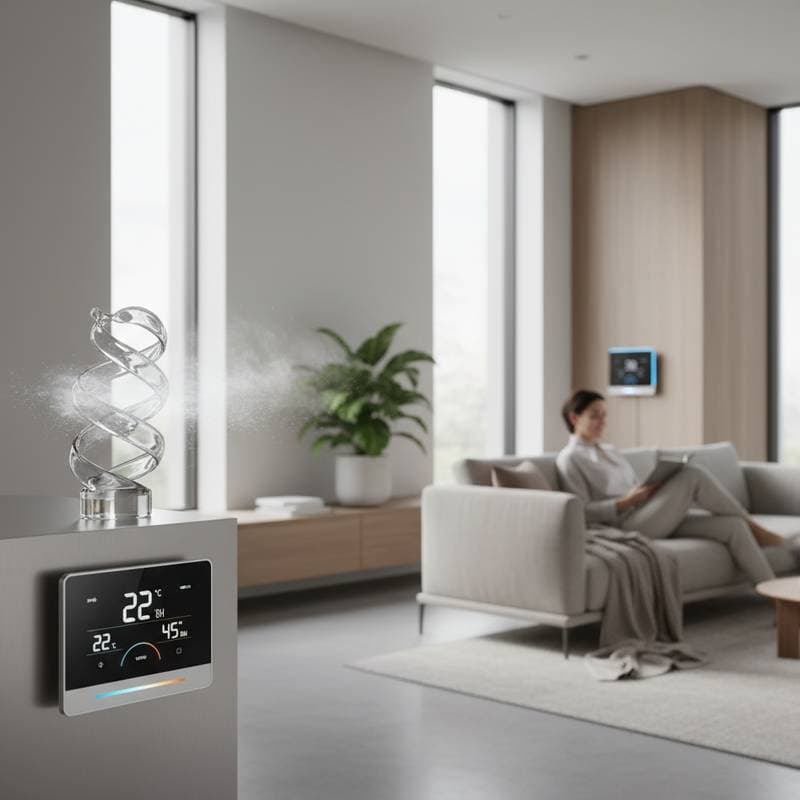Cut Winter Heating Bills by 50 Percent with Dual-Fuel Systems
Understanding Dual-Fuel HVAC Systems
Dual-fuel heating and ventilation systems integrate an electric heat pump with a gas furnace. This combination allows the system to switch automatically between the two components based on outdoor temperatures and efficiency needs. Homeowners benefit from the heat pump's energy savings during mild weather and the furnace's reliable performance in extreme cold.
These systems represent a smart upgrade for regions with variable climates. They optimize energy use by leveraging the strengths of each technology. As energy costs rise, such innovations become essential for managing household expenses.
How Dual-Fuel Systems Achieve Energy Savings
Heat pumps extract warmth from outdoor air, even in cooler conditions, and transfer it indoors with minimal electricity. When temperatures drop below a certain threshold, typically around 30 degrees Fahrenheit, the system activates the gas furnace for consistent heating. This seamless transition prevents the heat pump from straining and losing efficiency.
Studies indicate that dual-fuel setups can reduce heating costs by up to 50 percent compared to traditional single-fuel systems. The exact savings depend on local energy prices, home size, and insulation quality. For instance, in areas where natural gas rates are lower than electricity, the furnace component maximizes cost advantages.
Comparing Costs and Installation
Initial installation for a dual-fuel system ranges from $8,000 to $15,000, depending on the home's existing setup and system capacity. This investment includes both the heat pump and furnace units, along with necessary ductwork modifications. Professional assessment ensures compatibility with current electrical and gas lines.
Ongoing maintenance involves annual inspections of filters, coils, and burners, costing about $150 to $300 per visit. Regular upkeep extends system life to 15-20 years and maintains peak efficiency. Homeowners should schedule tune-ups before winter to avoid unexpected breakdowns.
Exploring Rebates and Incentives
Federal tax credits under energy efficiency programs can offset up to 30 percent of installation costs, capped at certain amounts. State and utility rebates often provide additional savings, particularly for high-efficiency models with SEER ratings above 16. Local governments in cold climates may offer grants to promote reduced fossil fuel dependence.
To access these benefits, verify eligibility through the manufacturer's documentation and submit applications promptly. Energy audits, sometimes free from utilities, help qualify for larger incentives. These financial supports make dual-fuel adoption more accessible for average households.
Practical Steps for Implementation
- Assess your current HVAC system through a professional energy audit to identify inefficiencies.
- Consult certified contractors for quotes on dual-fuel options tailored to your home's square footage and layout.
- Review energy usage patterns from past bills to project potential savings.
- Integrate smart thermostats for automated switching and remote monitoring.
- Insulate attics, walls, and ducts to enhance overall system performance.
These steps ensure a smooth transition and immediate returns on investment. Many homeowners report noticeable reductions in monthly bills within the first season.
Maintenance Tips for Long-Term Efficiency
Clean or replace air filters every one to three months to promote airflow and reduce energy draw. Monitor thermostat settings to avoid overworking the system during peak demand periods. In summer, the heat pump doubles as an air conditioner, providing year-round value.
Address minor issues promptly, such as unusual noises or uneven heating, to prevent costly repairs. Professional servicing twice a year keeps components in optimal condition. With proper care, dual-fuel systems deliver reliable comfort without excessive operational costs.
Realizing Savings in Extreme Weather
In regions prone to sub-zero temperatures, dual-fuel systems excel by relying on gas for intense cold snaps. This prevents the high electricity consumption associated with supplemental electric resistance heating. Families stay warm while utility bills remain manageable.
Beyond cost reductions, these systems lower carbon footprints by prioritizing the more efficient heat pump. They align with broader goals of sustainable home energy management. As 2025 approaches, upgrading positions homeowners ahead of rising energy demands.
Next Steps for Your Home Upgrade
Evaluate your heating needs today and explore dual-fuel solutions with local experts. Secure estimates to understand personalized savings potential. Invest in this technology to enjoy warmer winters and substantial financial relief for years ahead.



